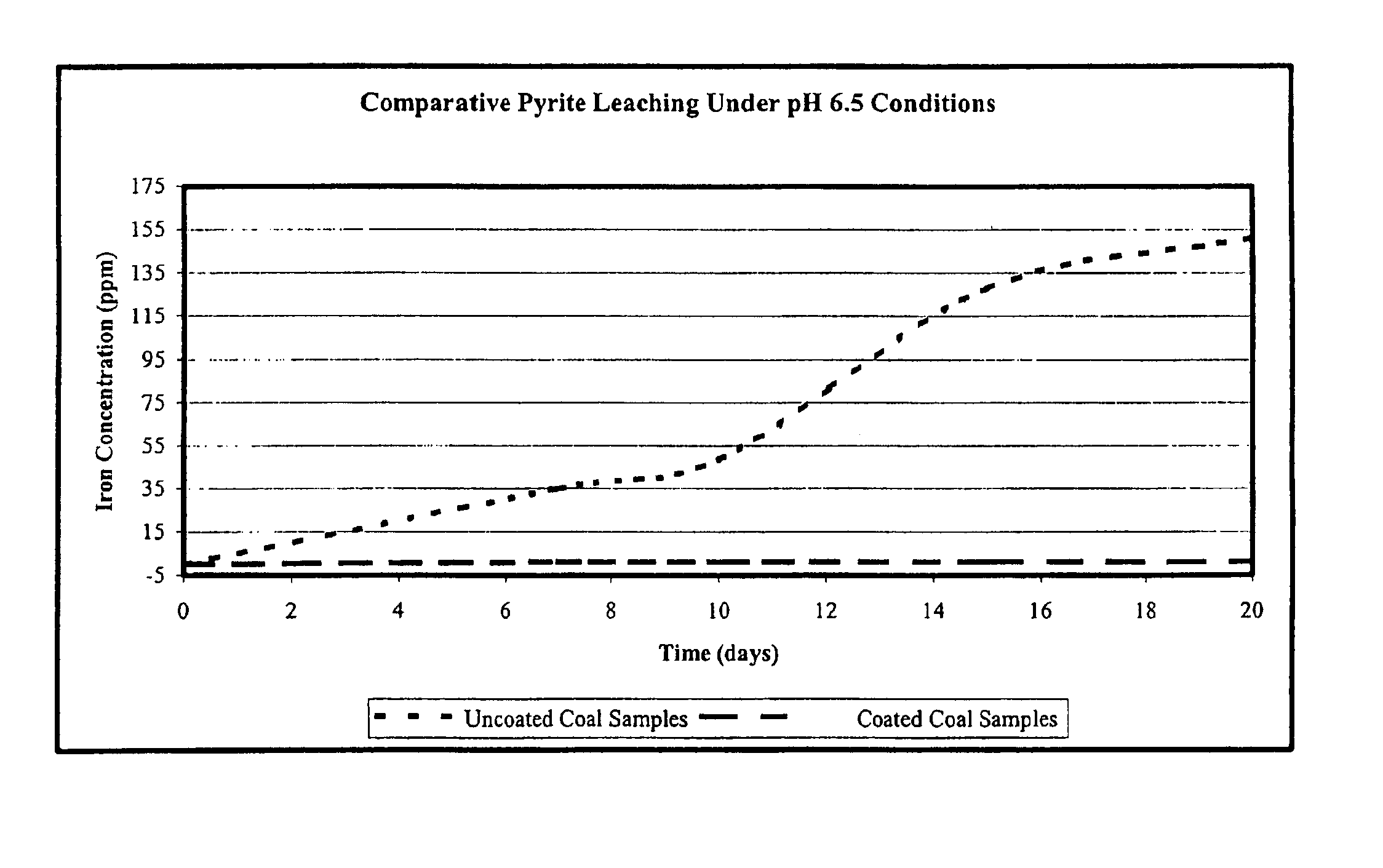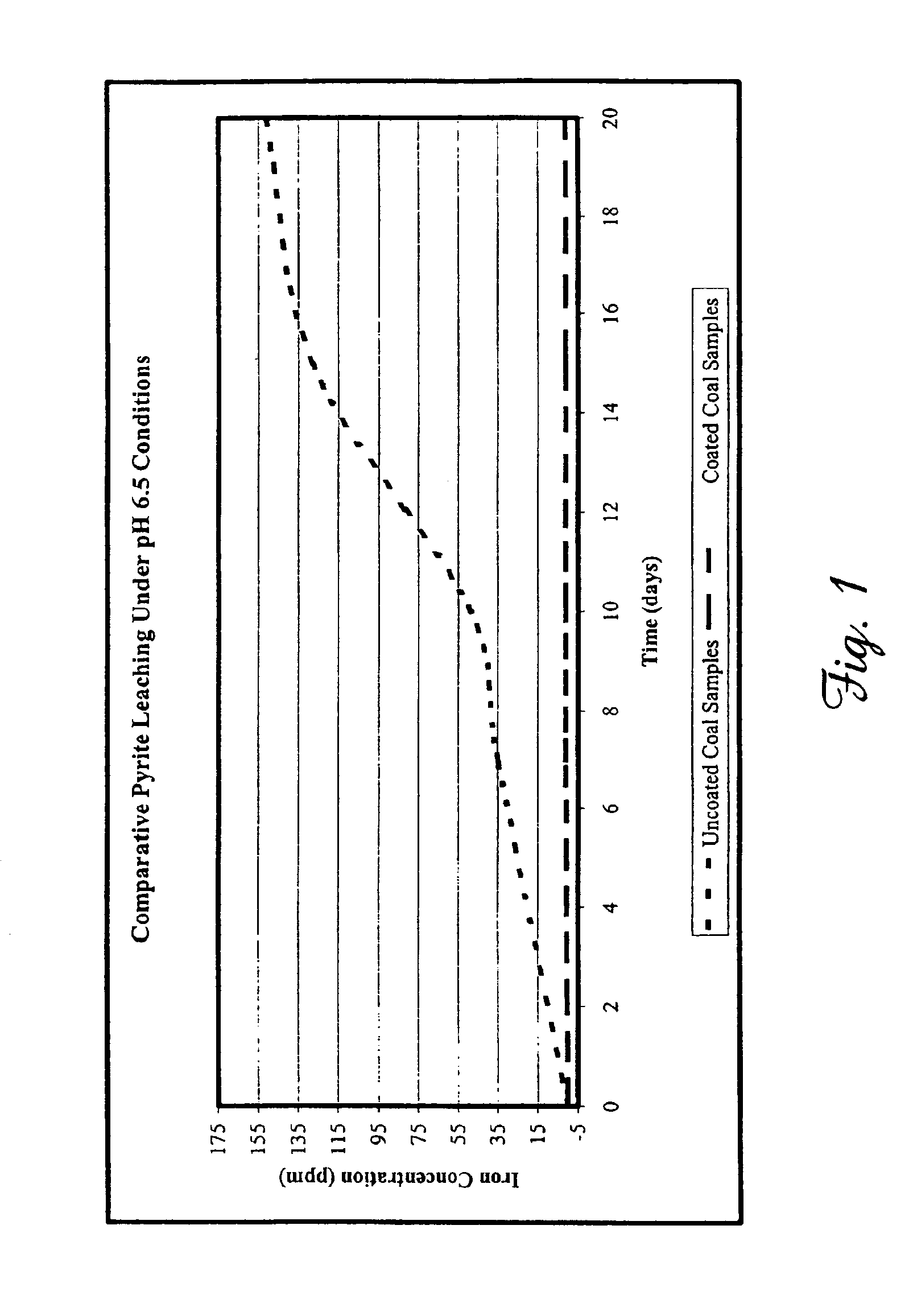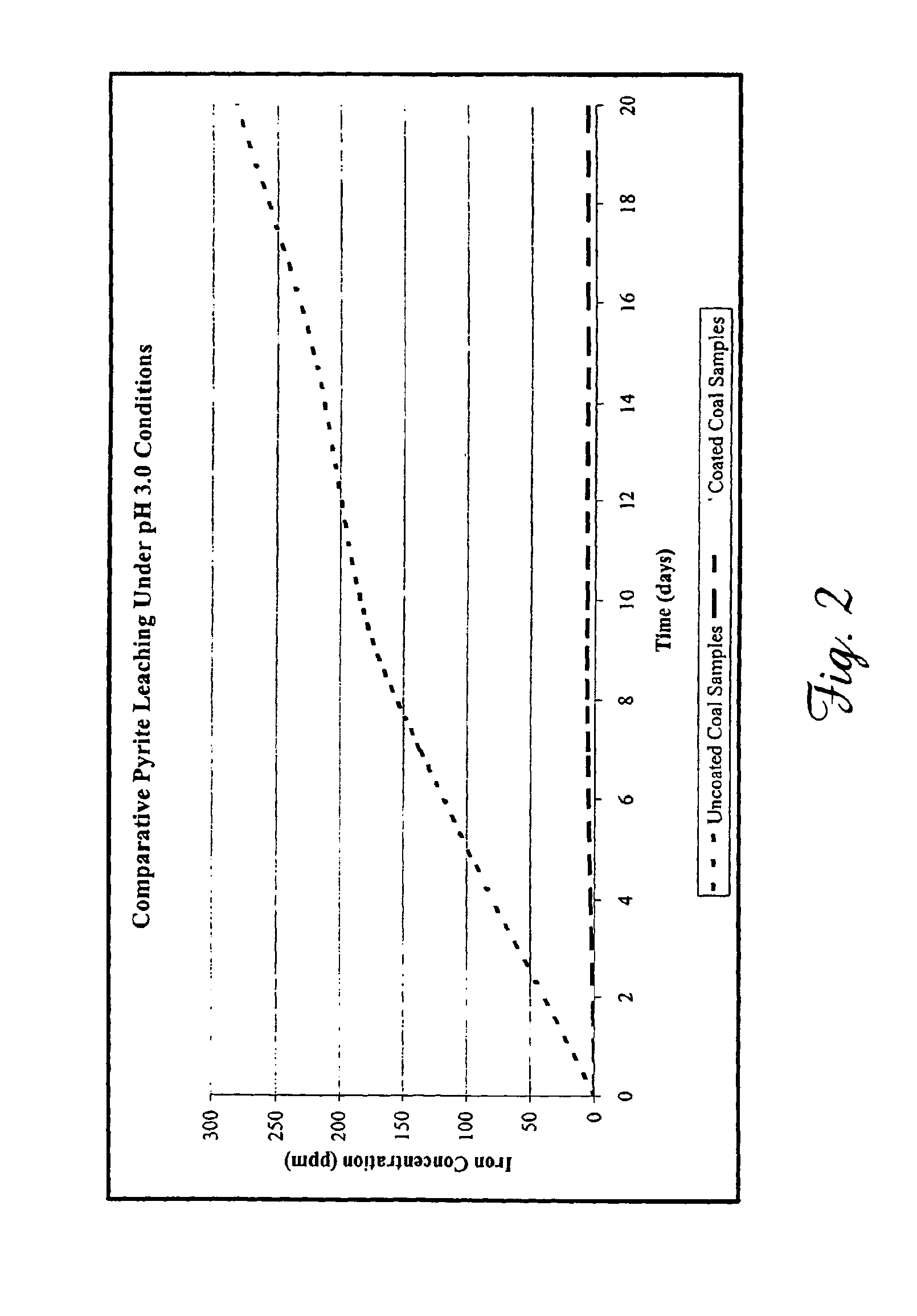Method for prevention of solid dissolution through covalent ligand bonding
a covalent ligand and solid technology, applied in the direction of quarries, chemistry apparatus and processes, coatings, etc., can solve the problems of metal oxidation, adversely affecting many streams, and large leaching of coal refuse piles, so as to improve corrosion resistance and prevent metal leaching
- Summary
- Abstract
- Description
- Claims
- Application Information
AI Technical Summary
Benefits of technology
Problems solved by technology
Method used
Image
Examples
example 1
Samples of refuse coal known to have an elevated pyrite content were collected from coal refuse piles known to leach 89,000 ppm (approximately 5000 pounds) of iron from an average flow of 43,200 gallons per day. The refuse coal was also known to have an elevated content of other metals, including manganese, zinc, copper, and others, as well as an average daily level of 21,000 ppm sulfate. The disodium salt of 1,3-benzenediamidoethanthiol (Na2BDET), prepared substantially as described in our U.S. Pat. No. 6,586,600, was used to evaluate the ability of one embodiment of the composition of the present invention to reduce metal leaching under conditions simulative of acid mine drainage.
Duplicate coal samples having an average mass of 15.97 grams were selected. Treated coal samples were immersed for 10 minutes in a 0.11 M solution of Na2BDET to coat them with the compositions of the present invention, and were air-dried for a period of 30 minutes prior to initiation of leaching experimen...
example 2
Heavy rainfall was simulated by placing coal samples treated as described above under a dripping column containing an aqueous solution (pH 3.0). An average of 500 g of the acidified aqueous solutions were dripped daily over the coal samples for a total of 20 days. Following the testing period, 20 mL aliquots were collected and filtered as described above. Total metals were analyzed using ICP-OES and CVAF as described. Each experiment was repeated at least 3 times. As shown in Table 5, coating the samples reduced iron leaching by 86.8% after 20 days.
TABLE 5Comparative 20 day average metal leaching under acidic rainfallconditions.Average Metal Concentration (ppm)MetalUncoated coalCoated coalCd<0.008*<0.008*Co0.2820.078Cu1.510.532Fe11715.4Pb<0.020*<0.020*Mn4.000.47Ni1.060.313Zn36.53.82Hg<0.0005**<0.0005***Concentration fell below the ICP-OES method detection limit. **Concentration fell below the CVAF method detection limit.
PUM
| Property | Measurement | Unit |
|---|---|---|
| chemical | aaaaa | aaaaa |
| pH | aaaaa | aaaaa |
| lattice structure | aaaaa | aaaaa |
Abstract
Description
Claims
Application Information
 Login to View More
Login to View More - R&D
- Intellectual Property
- Life Sciences
- Materials
- Tech Scout
- Unparalleled Data Quality
- Higher Quality Content
- 60% Fewer Hallucinations
Browse by: Latest US Patents, China's latest patents, Technical Efficacy Thesaurus, Application Domain, Technology Topic, Popular Technical Reports.
© 2025 PatSnap. All rights reserved.Legal|Privacy policy|Modern Slavery Act Transparency Statement|Sitemap|About US| Contact US: help@patsnap.com



